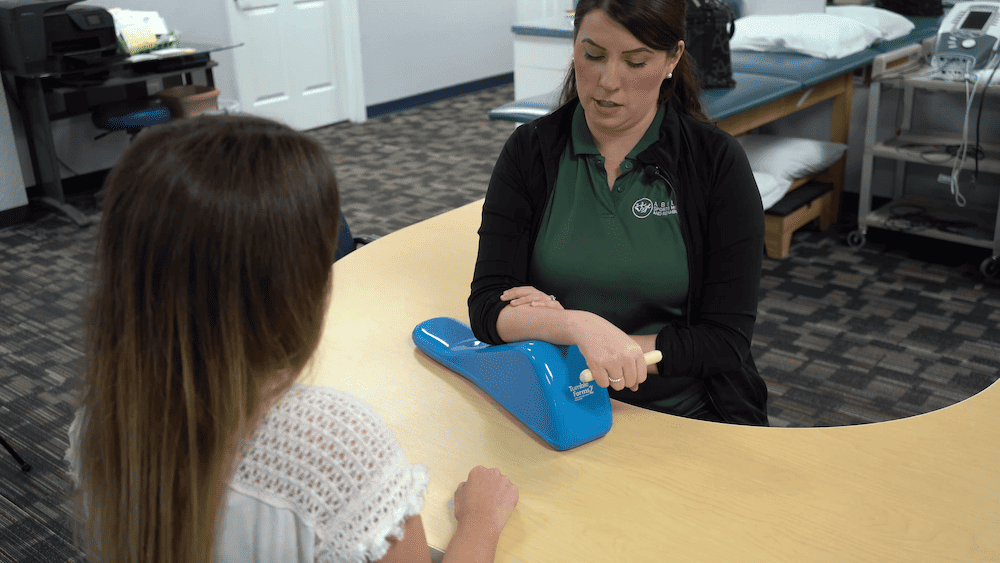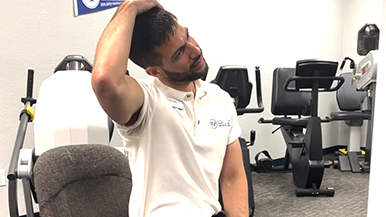
- What is occupational therapy?
- What is physical therapy?
- What are the differences between occupational and physical therapy?
Because of the similarities in their names, many patients confuse occupational therapy and physical therapy, two disciplines that offer distinct therapeutic benefits. While there are similarities between the two medical fields, there are significant differences that distinguish each profession.
To clarify these differences and help you understand the benefits of each, we’ll take a close look at the differences between occupational therapy and physical therapy to help you determine which one is right for you.
What Is Occupational Therapy?
Occupational therapy, or OT, focuses on improving the daily lives of patients by helping to minimize pain and improve mobility through targeted exercise and therapeutic practices.
In this way, occupational therapy treatments focus on issues that matters most to you. This includes taking care of yourself or your family, working, going to school, and much more. Occupational therapists work with a wide variety of patients who may struggle with emotional, mental, or physical challenges that interfere with their ability to engage in daily activities.
The goal of occupational therapy is to increase a patient’s independence and physical function in their day-to-day life. To do so, occupational therapists work closely with patients to identify their limitations and strengths, helping them set goals for themselves.
By developing a baseline understanding of your needs, occupational therapists will customize a physical treatment plan to help you reach these goals. This can involve modifying your environment or providing you with adaptive devices or technologies to help you function.
Standard treatment recommendations offered by an occupational therapist may include:
- Caregiver and family training
- Updates to your environment to improve accessibility (shower chairs or other assistive equipment)
- Home safety, accessibility, and fall prevention
- Techniques to improve your self-care routine
- Planning (short and long term)
- Return to work or school plans
- Techniques to improve concentration and memory
By incorporating these recommendations, your occupational therapist will follow three basic steps to begin your therapy:
- A customized evaluation, or occupational profile to define your function and goals
- An intervention plan to establish treatments to improve daily activities
- An outcomes evaluation to be sure you and the therapist are meeting the goals you’ve set
Using this process, occupational therapy can treat and improve the quality of life for patients with a wide range of conditions, including:
- Developmental disabilities
- Mental health disorders
- Physical illnesses such as arthritis or stroke
- Traumatic brain injuries
- And more
What Is Physical Therapy?

Physical therapy, or PT, is a health field that focuses on the diagnosis and treatment of physical impairments or disabilities. Physical therapists work with individuals across their lives to improve physical conditions affecting movement, range of motion, or strength. If you have orthopedic surgery, for example, you will likely do PT as part of your rehabilitation plan.
The goal of physical therapy is typically to help individuals improve physical function and mobility. Physical therapists work with clients to assess their impairments, set goals, and develop a treatment plan to improve balance, coordination, flexibility, and strength. The treatment plan can include exercises, manual therapy, heat, ice, or electrical muscle stimulation.
Physical therapy is designed to treat:
- Cardiovascular conditions
- Chronic physical pain
- Joint replacement or repair
- Mobility issues
- Neurological conditions
- Orthopedic injuries
- Sports injuries
For patients who have suffered a stroke or physical injury, physical therapy can help increase the speed of their recovery. The treatment works well for regaining strength, balance, and confidence. Physical therapy can help you recover after giving birth or adapt to a new artificial limb. PT also works well for patients who are re-learning to walk with an assisted device like a walker or a cane.
Like occupational therapy, the physical therapist works in coordination with your doctor or surgeon to help you heal. Your physical therapist will test:
- How well you move, bend, reach, and grab things
- Can you climb up steps safely
- Your heartbeat when you’re active
- Balance and posture
These tests often form the basis of a treatment plan that also includes goals that you set. Ultimately, this therapy is designed around your lifestyle and needs.
What Are the Differences Between Occupational and Physical Therapy?
There are several key differences between occupational and physical therapy:
- Treatment focus
- Practice scope
- Treatment techniques
- Treatment goals

Treatment Focus
Occupational therapy focuses on improving your meaningful everyday occupations (activities). These treatments concern themselves with the tasks you do every day as a normal part of your job or life.
Physical therapy, instead, focuses on improving physical function and mobility, usually after a major event, such as an accident or surgery. Physical therapy develops a plan to assess the impairment and then treats it in a way that improves strength or flexibility, balance, and coordination.
Practice Scope
The scope of practice for an occupational therapist is to help you engage in daily tasks that are difficult due to an impairment of some sort. The American Occupational Therapy Association (AOTA) defines the practice scope of this profession as related to “everyday life occupations in their desired roles, contexts, and life situations,” including:
- Activities related to taking care of yourself (bathing, feeding, dressing)
- Activities to support daily life (household management, child care)
- Health management
- Rest and sleep
- Education
- Work
- Play
- Leisure
- Social participation
The American Physical Therapy Association (APTA) says, “The professional scope of practice consists of patient and client management, which includes diagnosis and prognosis, to optimize physical function, movement, performance, health, quality of life and well-being across the lifespan.”
Treatment Techniques
The treatment techniques used in occupational and physical therapy differ greatly. For occupational therapists, these techniques often include:
- Teaching new coping skills
- Modifying the environment
- Providing equipment
By comparison, physical therapists use exercise, massage, and other muscle and balance-strengthening techniques to improve physical function and mobility.
Treatment Goals
The central goal of an occupational therapist is to help patients increase their independence by:
- Helping patients overcome challenges in their daily routine
- Evaluation of functional limitations when trying to take on basic tasks
- Improving range of motion or energy conservation techniques that help you become more independent
Physical therapists seek to relieve pain or improve mobility. The goal may be to help you recover from a sports injury or to recover the function of a limb after surgery or after a stroke. Goals include working on balance, preventing disability, or even adapting to using a walker.
Ability Rehabilitation offers both occupational and physical therapy to help you improve the quality of your life and health. Talk with our team today about your options and how we can help you reach your health goals.



